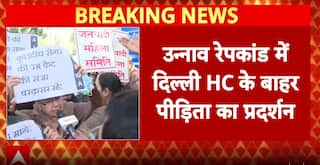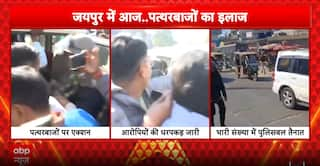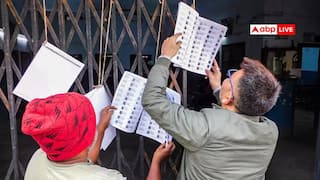Opinion | 10 Years Of Jan Dhan: Modi Govt Scheme For Financial Inclusion Is Great. But Where Should It Go Next?

The PM Jan Dhan Yojana just completed 10 years. If we count its Congress predecessor – Swabhimaan – even more. The total number of bank accounts opened in 10 years is 531 million, which is an outstanding leap, the current government having built boldly and effectively upon the groundwork done by previous ones. It makes sense at this stage to take a step back and see what has worked and what hasn’t with the plan. When assessing any policy, it’s always best to begin with people and culture.
There Is More To Jan Dhan Than Just ‘Jan Ka Dhan’
According to the World Bank, about 62% of lower-middle-income people and 39% of low-income people in India have an account with a bank or financial institution now. Apart from all its more tangible goals, the dignity and sense of significance that it bestows on the poor and powerless in faraway villages can’t be underestimated. To have an account is almost like having a ‘place value’ in the financial mainstream – and hence, in a sense, the power mainstream – of society.
The facilities available via Jan Dhan accounts also become a benchmark for what is fair and reasonable, compelling the informal financial system to calibrate. For a housewife, getting her own bank account is the first step to being seen as a responsible and empowered financial entity in the family. From hiding meticulously saved, crumpled notes in the atte ka dabba, or between the layers of sarees, even the poorest of women can now save in their own account, money that they can call theirs. Jan Dhan is the real ‘stree dhan’ now, more liquid and linked. Poor young men hanging on to every little modicum of respect and significance in an overbearing society with too many odds stacked against them, can feel an anchor of agency with these accounts. Having said that, there is a hard purpose to these accounts, too, of course. The premise is that an easily accessible bank account for the marginalised is the gateway to spurring saving habits, ensuring access to cheap credit, insurance, and, hopefully, investment for good returns etc. The other dimension is direct transfer of cash – benefits, salaries, remittances, gifts, pensions – into the account, which can reduce leakage dramatically.
Rajiv Gandhi talked about 85 paise out of every rupee leaking out of the system, and he would have been happy to know that this is one system that plugs some holes at least in that leaky bucket of a rupee.
Yes, They Have Accounts. But Are They Using Them?
As of now, out of 531 million accounts, about 103 million are inoperative, and another 43 million have zero balance. The average deposit in these accounts is Rs 4,352. However, typically, such simple averages tend to be skewed towards much bigger deposits, so there is a likelihood that a vast percent of people have less than Rs 4,352 in savings. It is easy to imagine why many would rather keep their few Rs 500 notes in their underpockets, or tiny bags (jholis) sewn into their underpants (or under the mat on their cot) rather than in a bank account. The credit deposit ratio of scheduled commercial banks hit a new high at about 80%, with banks worried about generating enough deposits.
Know Your Bank. A Case For ‘KYB’
An important miss when it comes to the marginalised and less exposed is the financial education itself. At the grassroot levels, the roles that different banking products can play to enhance life by addressing different need states and life stages is not understood well. People need to internalise the ordinary milieu of risks, liabilities, opportunities and responsibilities in the process. People need to know how a formal banking system is different from, and superior to, all sorts of legitimate and illegitimate informal financial operators who abound. Highly exploitative players, with interest rates as high as 3% a month, and not allowing principal payments below a certain amount, which they know ordinary wagers would find difficult to cumulate, design their process to trap the ignorant poor. The old Bollywood ‘mahajans’ are thriving in villages despite Jan Dhan and owing to lack of education on reasonable credit process and options. The Direct Benefit Transfer (DBT) has been a strong aspect of the Jan Dhan Yojana, but it is important to realise that no tech or process is really leakage proof, as lack of education doesn’t just deter engagement with banking but can always open gaps for touts to exploit the DBT process in creative ways.
The role of banking correspondent (BC) ‘sakhis’ and self-help groups towards driving this education to the next level can be reappraised and expanded. A wide network of popular grassroots social media influencers can be partnered with to spread education and drive adoption on a pay-for-performance basis. People may think in one language but feel in their mother tongue. This machine also needs to explore languages beyond the official ones. India has 75 socio-cultural regions, each with their own vernacular, and if we are looking to attract the last man, typically scared and suspicious of the frequently overbearing system and condescending low-level operatives of the government, we have got to build trust and comfort in their mother tongue – across these 75 different languages and dialects. Also, basic financial education along with some practical simulations should be included in school curriculums as a compulsory subject at grade 7-9 levels.
Make Banking Smooth & Friendly To The Poor
There are other logistical gaps. Slow internet speeds in faraway areas make the tech experience clumsy and cumbersome. Too many ATMs in small places are not working or out of cash or involve queues that are rather long – thus defeating the point of ATMs in the first place.
The bank mobile apps’ user interface needs to be brutally simple and intuitive, the underlying user experience highly personalised using AI – we need app designs that literally anyone, with minimum literacy, can use. The delay in MNREGA payments has created a parallel economy where workers prefer ‘half the money upfront’ paid by contractors, rather than wait for full money at an uncertain time. And the bank staff need to guarantee professional respect and service quality to the poor, the Dalits, the tribals and other lower castes, however humble their banking interactions might be.
Banking correspondent sakhis need to be monitored for the same. The bank should not be a scary experience for those who need it the most. The ‘feudal overhang’ that pervades a lot of subaltern sarkari attitude needs to be cured. Devising a biannual online code of behaviour around real-life, locally relevant simulations, to remove this brain fog, can be a good starting point.
Mobile Wallets As ‘Banking Lite’?
As per GlobalData, UPI had a user base of 300 million as of October 2023, and it continues to grow rapidly. Going by the experience in many countries, mobile wallets have replaced bank accounts as the gateway to the financial system, especially for the younger generation. Interest-bearing deposits, insurance, overdraft and small loans et al can be layered into the mobile wallet itself. A roadside vegetable hawker, who needs a thousand rupees capital every morning to procure stock that he will sell by evening, to pay back the dues by evening, needs a reliable and regulated daily credit-cycle system that’s brutally simple (informal options may charge them as much as 10% a day). A poor man facing a sudden medical emergency in his family, or fire or flood, needs to borrow money there and then from a reasonable and legitimate mobile wallet.
In order to allow simple investments that can bear quality returns, there is also a case for a special purpose mutual fund tailormade only for deposit holders with small deposits (say less than Rs 10,000) via mobile wallets, that gives highly attractive returns and provides a baseline guarantee by the government. And it shouldn’t need a relatively formal relationship of a bank account. As many as 38% of lower-middle-income and 61% of lower-income people still don’t have accounts (as per World Bank). So, as smartphone penetration passes the billion-users mark in India, mobile wallets could potentially be an effective complement to plug this last stretch.
Design Products Around People & Culture
There is a big chasm between where the grassroots people are and where the banking system is. Most banking instruments today are designed for moneyed, asset-rich or salaried people, and then the banks try to retrofit it somehow as an afterthought to those who don’t quite fit into these frames. But then such misfits are the bulk of India. Many actuarial models themselves are made of risk parameters with the former in mind. The absence of evidence is not evidence of absence when it comes to credit-worthiness. Loans are designed for those who need it the least, because of lazy and rigid risk modeling. Jan Dhan banking needs to be enhanced with “jan man” banking. A white-sheet reassessment of banking products would entail not just the economic behaviours of the bottom 50% of population but also their cultural, psychological, livelihood and lifestyle considerations.
There are crores of families where women put their earnings in the hands of men. There are joint multigenerational families, where banking needs are intricate due to lack of a nucleated definition of wealth or risks. Credit cards, loans and interest rates are still seen very suspiciously in large parts of rural culture. Relatives, preceded only by God, are incidentally the biggest detractors for the insurance sector, providing peace of mind when it comes to life’s uncertainties and risks, even if, often, not the actual cash. Weddings and funerals can drive people bankrupt – voluntarily sometimes – pretty rare in global finance.
The concept of retirement savings is not seen as relevant for 90% of the workforce, that comprises informal sector workers or the self-employed. With the majority of the workforce dependent on agriculture in rural India, credit cycles there need to be aligned with the crop cycle. Money is probably the most popular medium of trust ever invented – and a currency for significance and purpose. A financial revolution should in essence begin with a cultural revolution. It needs to begin with understanding people whose lives we seek to change. Self-help groups, grassroots NGOs, social entrepreneurs and BC sakhis can play an important role in this participatory product design process.
ALSO READ | India Leaps Ahead Of China In Financial Inclusion Metrics: SBI Report
An ‘Original Desi’ Financial System For The World (That Is Not Just About The Tech)
For a highly diverse, high-context society, in transition from the communal to the individual, the banking system has mostly copy-pasted the western templates of finance, where a truly bottoms-up inclusion would mean a lot more diversity of financial products tailored to marginalised segments and their behavioral contexts. There is tremendous enthusiasm in GOI to have other countries adopt India’s digital infrastructure. Maybe in the above marriage of technology with grassroots economic behaviours and incisive understanding of socio-cultural context, we can truly build an inclusion model for the entire world to emulate. Maybe there is even an opportunity to undo some of the banes of the global financial system – an insidious reliance on credit cards, interest rates on savings lower than inflation, unreasonable speculation and opaque extractive charges to serve greedy bosses, slow legacy tech and arcane processes etc.
Prashant K. Umaputra is an author, customer strategist and CEO, and a commentator on media, economy and strategy
[Disclaimer: The opinions, beliefs, and views expressed by the various authors and forum participants on this website are personal and do not reflect the opinions, beliefs, and views of ABP News Network Pvt Ltd.]


























